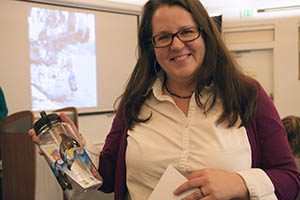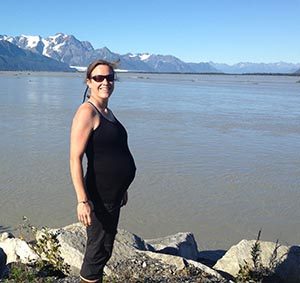By Lisa Matlock, Outreach Coordinator
One of the Council’s federal mandates involves environmental monitoring. With a small staff and vast geographic area, this monitoring takes many forms. Monitoring is often done by staff or contractors, but some monitoring takes place thanks to the Council’s volunteers and interns – all citizen scientists.
Since 2014, the Council has had high school interns in the community of Cordova who help monitor for aquatic invasive species. Three interns, Sarah Hoepfner, Cadi Moffitt, and currently Cori Pegau, have volunteered to hang sturdy plastic “settling plates” in the Cordova harbor each spring, to be picked up in the fall. The interns check the organisms that accumulate on the plate for critters such as invasive tunicates and bryozoans.
 Since 2009, the council has partnered with the Chugach Children’s Forest to help youth from the Exxon Valdez oil spill region connect to Prince William Sound directly through unique outdoor experiences. The council has co-sponsored multiple expeditions in which students from Cordova to Kodiak ply the waters of Prince William Sound by kayak, charter vessel, and ferry. The wonders of the Sound, its wildlife, its communities, and its beauty have touched them all, and along the way these youth have learned how the Exxon Valdez oil spill affected this special place and how they can be part of preventing future spills.
Since 2009, the council has partnered with the Chugach Children’s Forest to help youth from the Exxon Valdez oil spill region connect to Prince William Sound directly through unique outdoor experiences. The council has co-sponsored multiple expeditions in which students from Cordova to Kodiak ply the waters of Prince William Sound by kayak, charter vessel, and ferry. The wonders of the Sound, its wildlife, its communities, and its beauty have touched them all, and along the way these youth have learned how the Exxon Valdez oil spill affected this special place and how they can be part of preventing future spills.